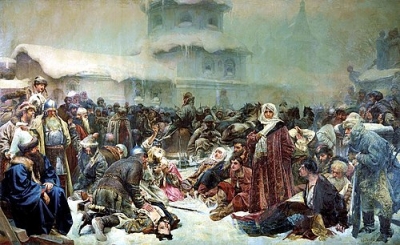
Ivan launched a war against the Novgorod princedom in 1470 and conquered it. He made it a part of his empire in 1478. By this he acquired all of northern Russia from Lapland (now Finland) to the Ural Mountains. He kept on increasing his domain by conquest, purchases of surrounding sovereign territories or by using his diplomatic talent to win allegiance from weaker princes.
As a result of two wars with Lithuania (1492 and 1500), he forced Alexander I, the ruler of that country and the king of Poland, to give up some of their towns. Ivan III thus came to be known as the ‘gatherer’ of Russian land as he succeeded in tripling the territory of his state.
During this period, Moscow was still a part of the Mongol Tatar Empire of the Golden Horde and was expected to pay tribute to the Tatar rulers. The Mongol Horde was already weakened by this time and Ivan formally refused to pay further tribute in 1480.
The Horde’s last khan tried to make Ivan comply, but the two armies just stood opposite each other on the Ugra River and no battle was ever fought. Instead, both sides retreated and the demand for tribute came to an end.
During this time, Moscow started to be called the Third Rome due to its new political position (Rome and Constantinople being first and second). In 1497, Ivan made the double-headed eagle, a Byzantine symbol, as Russia’s official emblem. Under Ivan III, a code of law known as Sudebnik was formulated in the year 1497.
It was the first time that the laws of Moscow were written down in one place. Ivan’s success in making Moscow the centre of Russian power earned him the title “the Great”. He died on 27 October 1505 and was succeeded by his son Vasili III.
Picture Credit : Google




